Are you looking to bring a touch of sunny climes to your garden? Mediterranean garden design ideas could be just what you need. With their low maintenance, fragrant, and architectural plants, Mediterranean gardens evoke a sense of warmth and relaxation that’s perfect for enjoying your outdoor space.
Gravel, paving and sun-soaked seating areas replace the need for time-consuming lawns, making this style ideal for those of you seeking simplicity and beauty. So why not embrace the opportunity to create your very own holiday haven within your outdoor space?
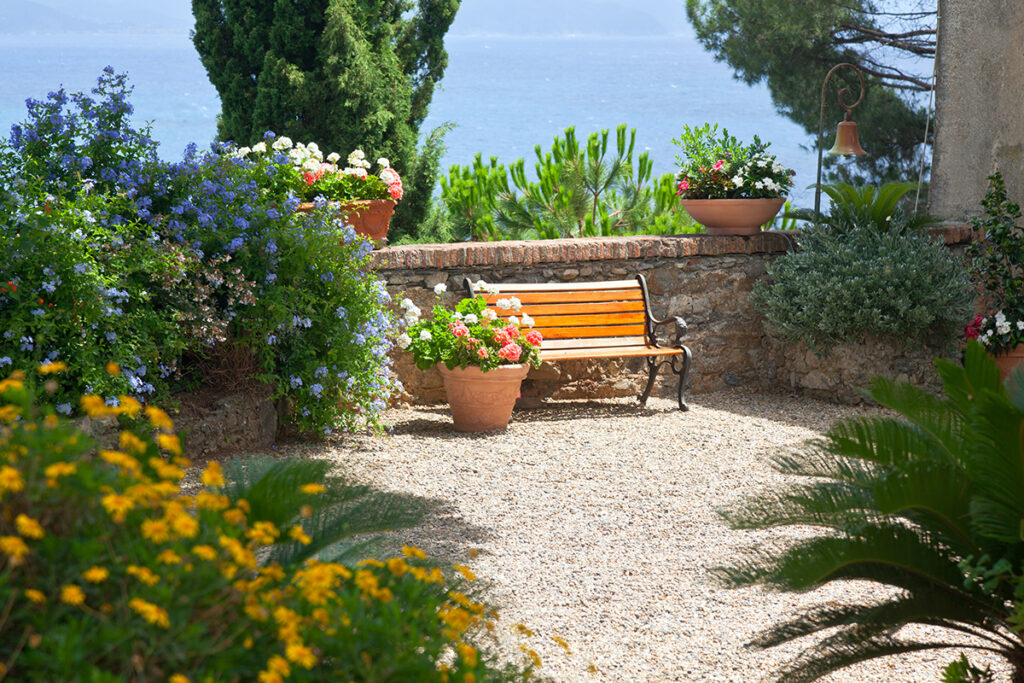
Understanding the Mediterranean Garden
Key Characteristics
Mediterranean gardens are inspired by the seaside landscapes of countries such as Greece, Italy, Spain, and Portugal. They are known for their low maintenance, fragrant and architectural plants. These gardens typically feature:
- Drought-tolerant and low-growing plants
- Gravel and paving instead of time-consuming lawns
- Seating areas in shaded spots, perfect for UK gardeners
- Water features for a sense of calm
- Architectural elements like sculptures, urns, and ceramics
- Trees used for shade and visual interest
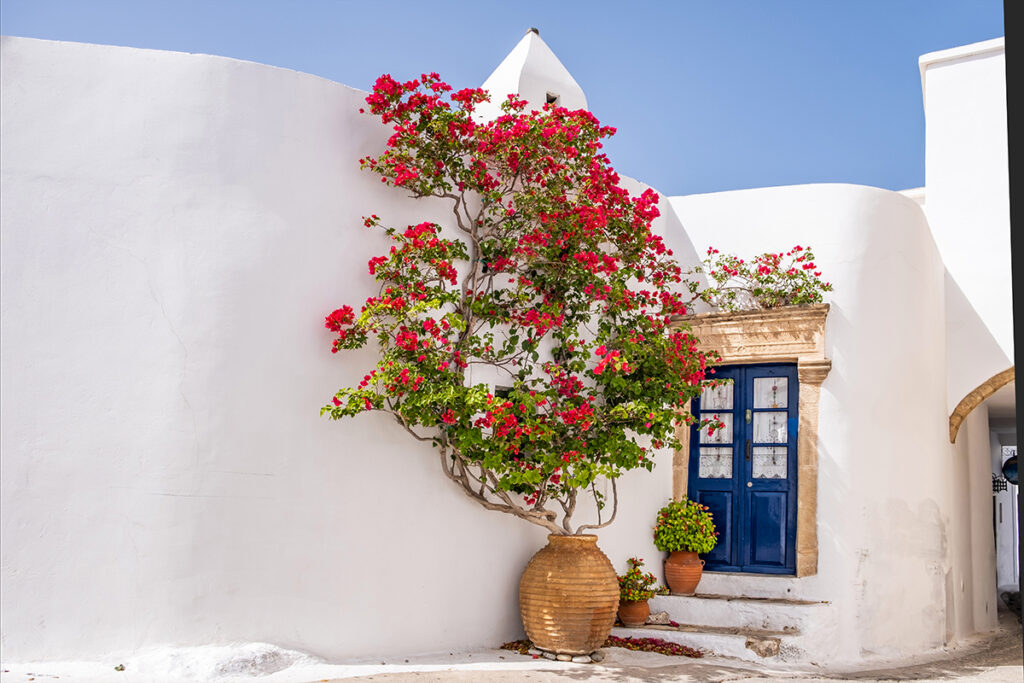
The Mediterranean Climate
The climate in Mediterranean countries is characterised by hot, dry summers and cool, humid winters. While UK gardeners may not experience the same temperatures, creating a Mediterranean-style garden can still be achievable by incorporating the features mentioned above.
Mediterranean plants are generally hardy, drought-tolerant, and low maintenance, making them excellent choices for UK gardeners looking to create a relaxing outdoor space. The use of gravel, paving, and shaded seating areas also helps to recreate the feel of sunnier climes without the necessity for constant upkeep.
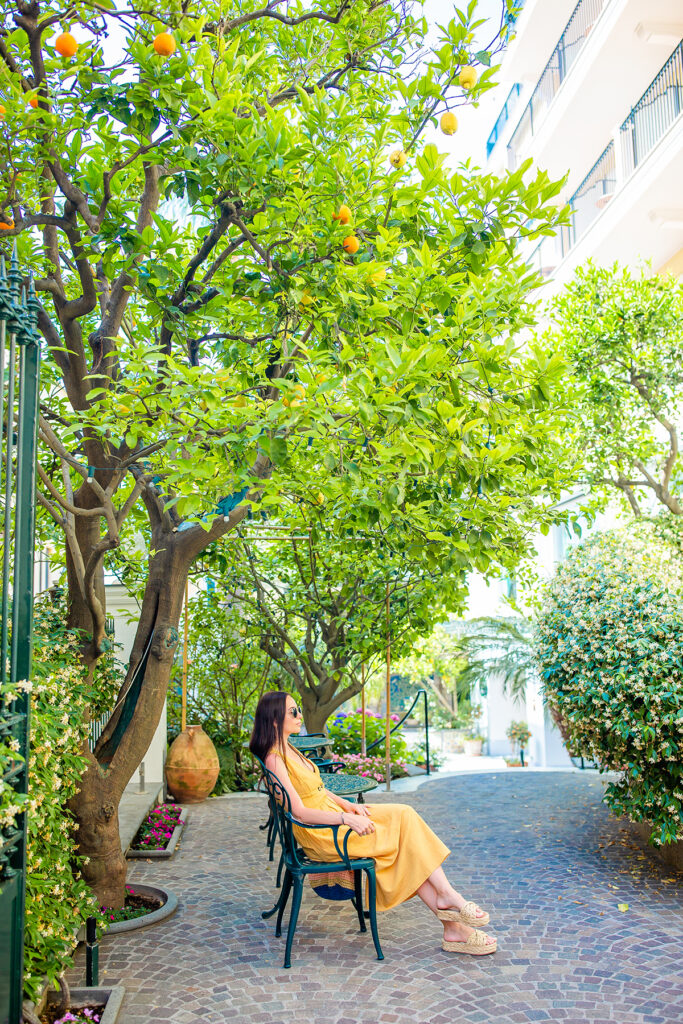
Choosing the Right Materials
When designing your Mediterranean garden, choosing the right materials is essential to create an authentic and practical space. In this section, we’ll explore several suitable materials and their benefits.
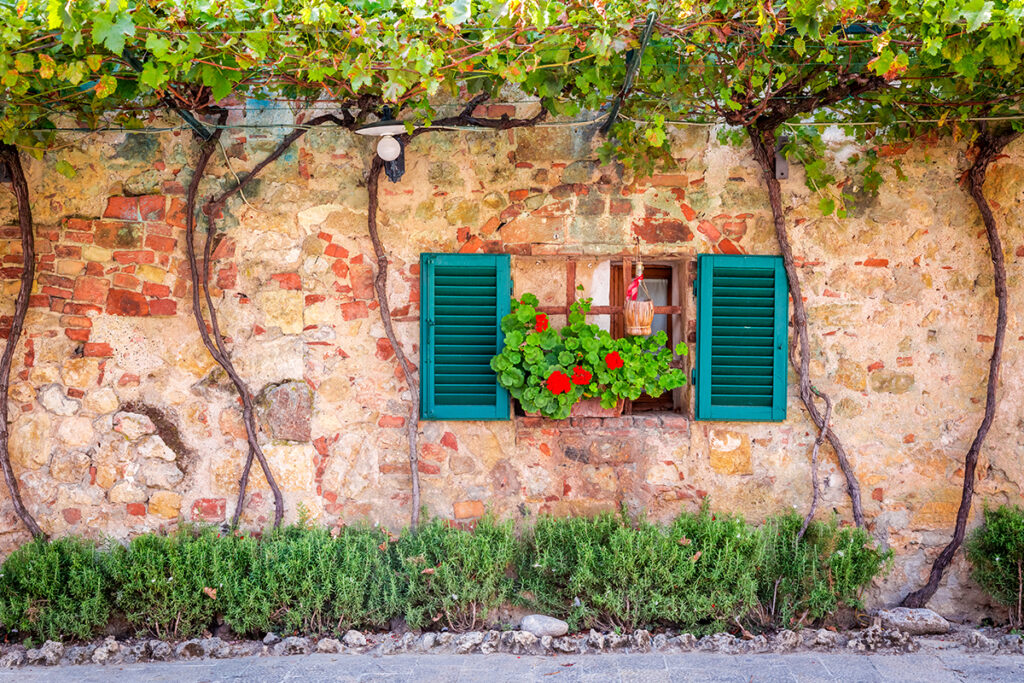
Natural Stones and Gravel
In Mediterranean gardens, natural materials such as stones and gravel are commonly used to create a low-maintenance and visually appealing surface. Gravel gardens are not only drought-tolerant but also help suppress weeds and reduce water evaporation. Opt for stones in natural, earthy colours like terracotta, beige, or grey to complement the plant palette of your garden.
- Gravel mulch: Spread a layer of gravel mulch around your plants, which will help keep their roots cool and retain moisture.
- Stone pathways: Define the meandering paths and seating areas using a variety of stone sizes and shapes to create visual interest.
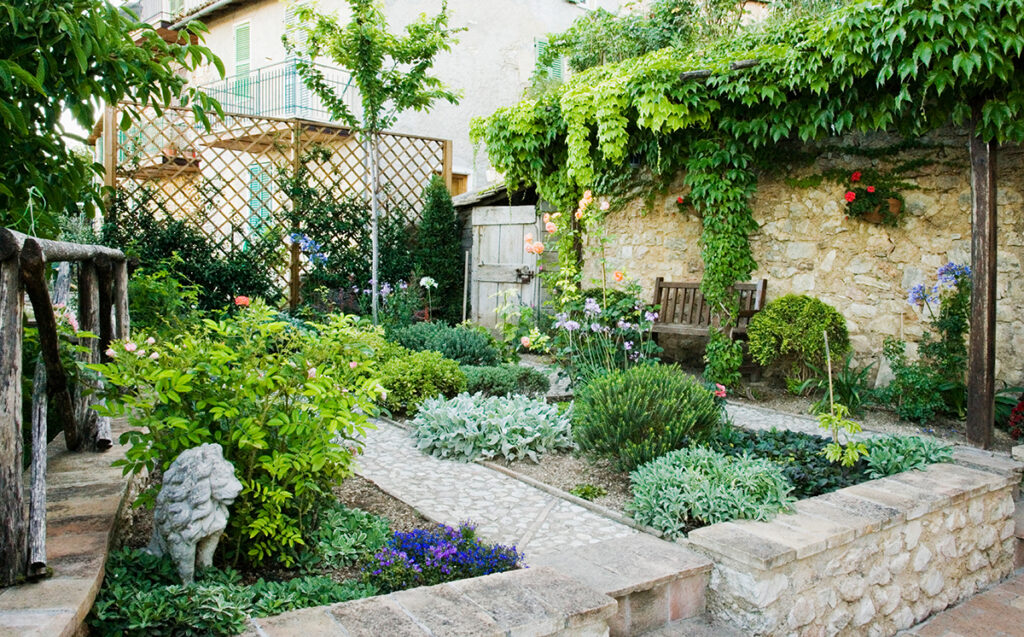
From Terracotta to Tiles
Terracotta is a classic choice for Mediterranean gardens due to its natural, earthy appearance. Terracotta pots and tiles work incredibly well in these gardens, adding a warm colour accent and providing excellent drainage for plants.
- Terracotta pots: Display your sun-loving plants, like lavender and santolina, in terracotta pots to enhance their Mediterranean vibes.
- Tiles: Use terracotta tiles or other colourful, patterned tiles to create a striking patio or terrace for your outdoor seating or dining area.
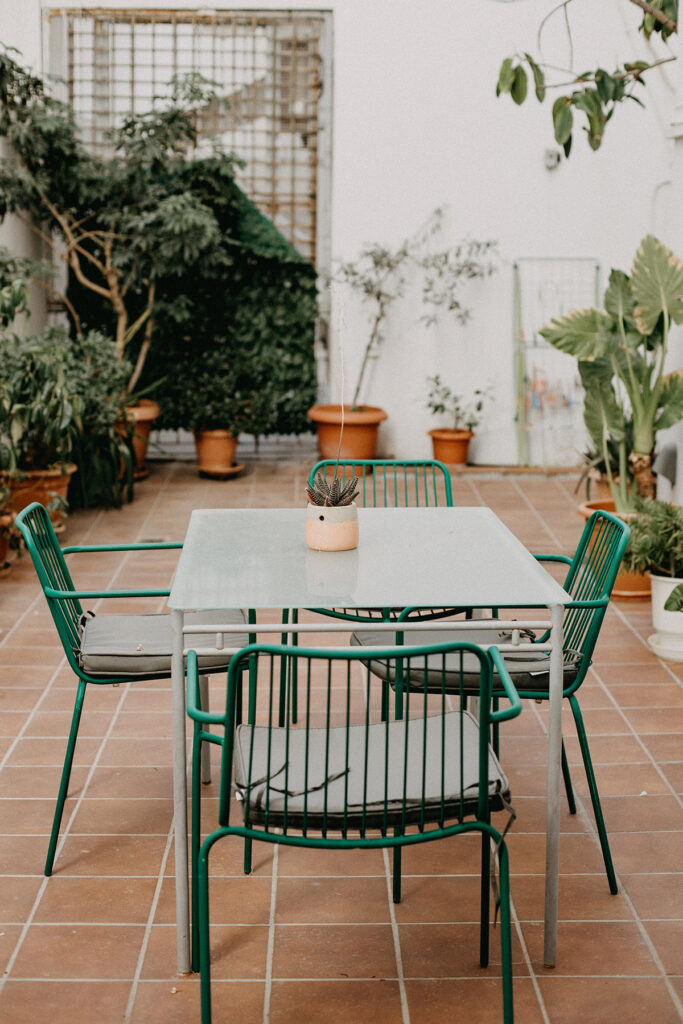
Paving and Masonry
Incorporate paving and masonry into your Mediterranean garden to create durable surfaces with an authentic feel. Opt for materials that are consistent with the overall style and colour scheme of your garden.
- Paving: Create elegant and practical walkways or patios using materials like natural stone, concrete, or brick. Consider permeable paving options to promote proper drainage and prevent standing water.
- Masonry: Add garden walls and raised beds built from stone or brick masonry, both for their aesthetic appeal and to provide support and structure to your garden. These materials also help retain soil moisture and create microclimates for your plants.
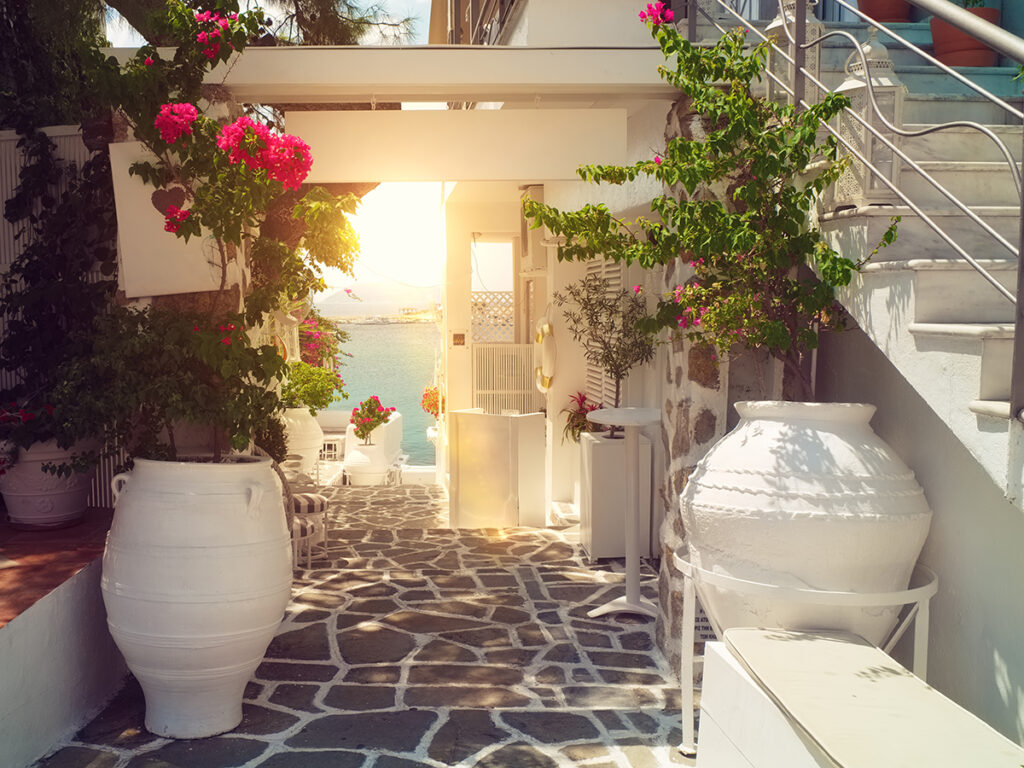
By carefully selecting the right materials like gravel, stones, terracotta, paving, and masonry, you can create a Mediterranean garden that is not only a visual delight but also a low-maintenance, water-wise, and enjoyable space for you and your family to unwind and relax in.
Plant Selection
Herbs, Trees and Shrubs
In designing your Mediterranean garden, carefully select plants that are typically low maintenance, fragrant, aromatic, and suitable for the climate. Your garden can include herbs such as lavender, rosemary, thyme, and oregano, as they not only add beautiful colours but also produce a pleasant fragrance.
For shrubs, consider plants like santolina, euphorbia, and agapanthus. These plants are relatively low maintenance and grow well under dry conditions.
Finally, include trees like olive trees, palms, and cypresses to create a classic Mediterranean look.
Always ensure that your plants have well-drained soil, which is crucial for a successful Mediterranean garden.

Climbers and Ornamental Grasses
Mediterranean gardens benefit from climbers and ornamental grasses that offer more visual appeal and create focal points. Jasmine and cistus are both excellent choices as they provide beautiful, scented flowers with an authentic Mediterranean feel. Other great options include artemisia, euphorbia characias, and ornamental grasses such as blue fescue.
Don’t forget to include architectural plants like yuccas, salvia, and Cupressus sempervirens (also known as Mediterranean cypress) as these can help shape your garden’s landscape. Remember that incorporating various plant heights and shapes can enhance the overall aesthetic appeal.
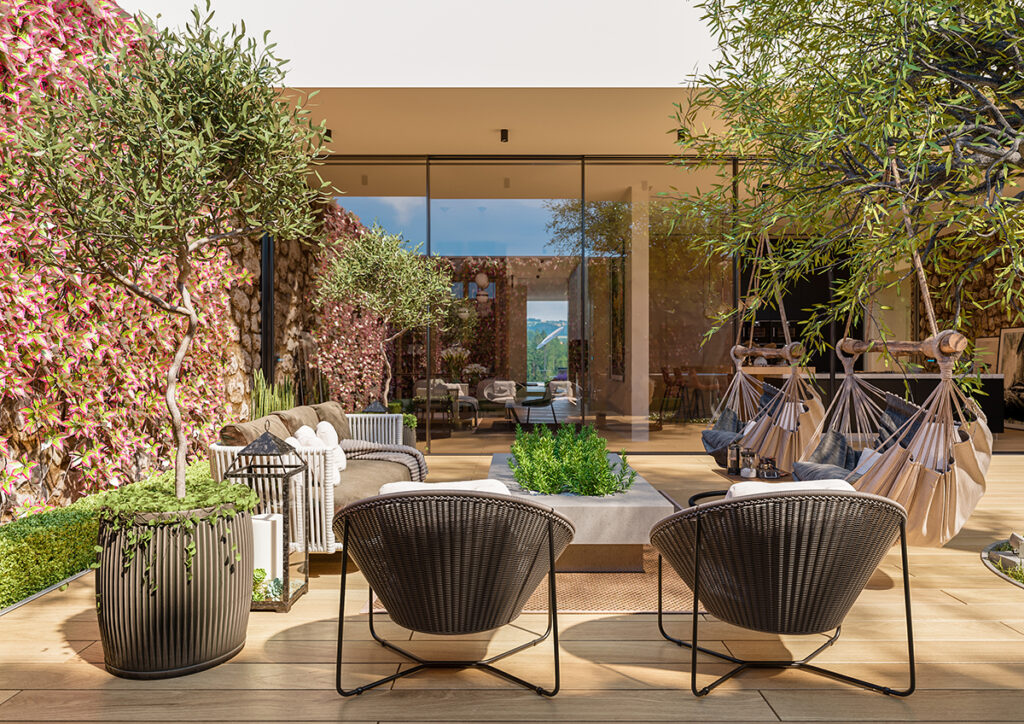
Plants for Full Sun
The majority of Mediterranean plants require full sun to thrive. Plant species like lavender, pelargoniums, succulents, and container gardening favourites such as dwarf citrus trees excel in sunny environments. Drought-tolerant plants, such as Nepeta (catmint), are also perfect choices for sun-loving gardens.
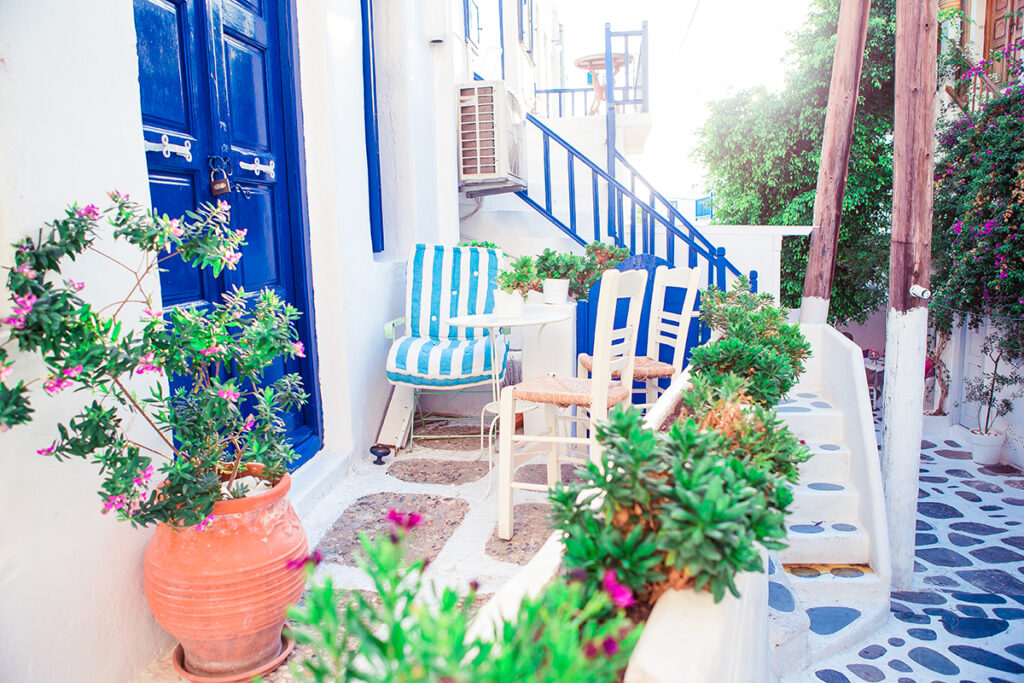
When choosing plants for your Mediterranean garden, keep in mind that they should be able to withstand dry conditions and well-drained soil. The blue flowers of rosemary, for example, bloom between April and June and thrive in neutral to alkaline soils with full sun. Incorporate potted plants like olive trees and Chusan palms as these add depth and contrast to your outdoor space.
Remember that in creating a Mediterranean garden, the key is to carefully select plants that convey a sense of harmony and evoke the essence of the region.
Creating Spaces and Features
Creating Seating Areas
When designing your Mediterranean garden, it’s important to create seating areas where you can relax and enjoy your surroundings. Consider using natural stone or terracotta tiles for paving, as these materials complement the Mediterranean style. Border paths leading to your seating area with low-maintenance, drought-resistant plants to enhance the atmosphere. Add comfortable outdoor furniture to create a space where you can unwind or entertain friends.
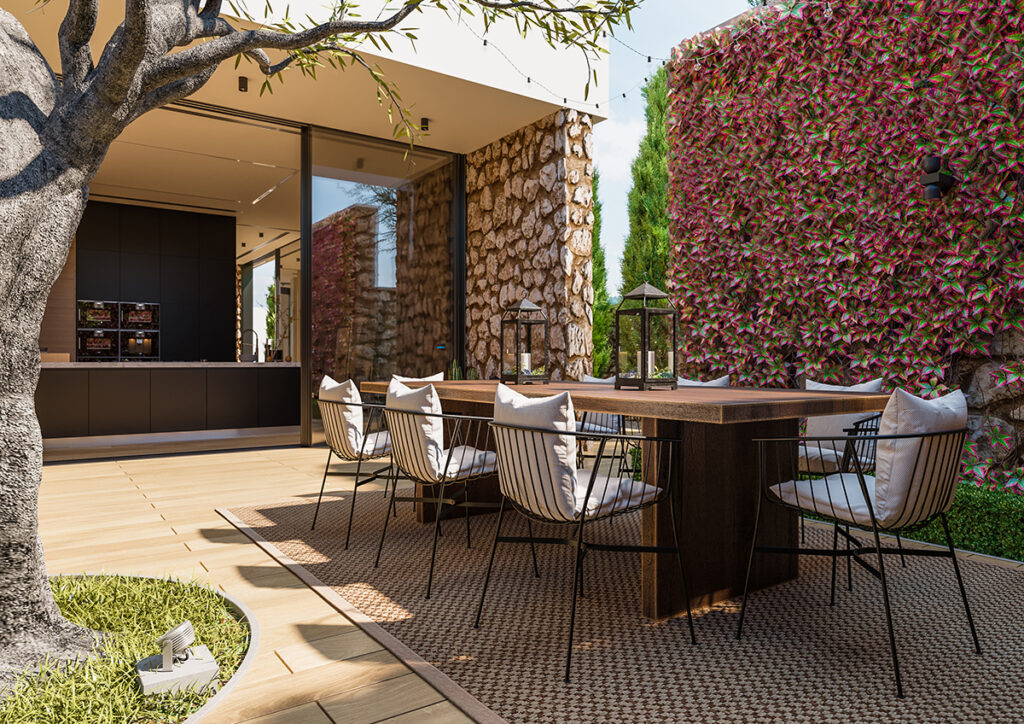
Pergolas and Outdoor Dining
In a Mediterranean garden, pergolas and other structures can provide shade and ambience for outdoor dining areas. Position your pergola on a patio or lawn, making sure to select a sunny, south-facing spot. Climbing plants such as jasmine, bougainvillea, or wisteria can be trained up the pergola, adding colour, scent and a touch of romance.
An outdoor kitchen is another fantastic feature to consider incorporating into your garden design. Rustic-style designs with Tuscan-inspired colours can help to recreate the Mediterranean vibe.
A built-in barbecue, pizza oven or cooking station is perfect for those summer evenings spent dining al fresco with friends and family.
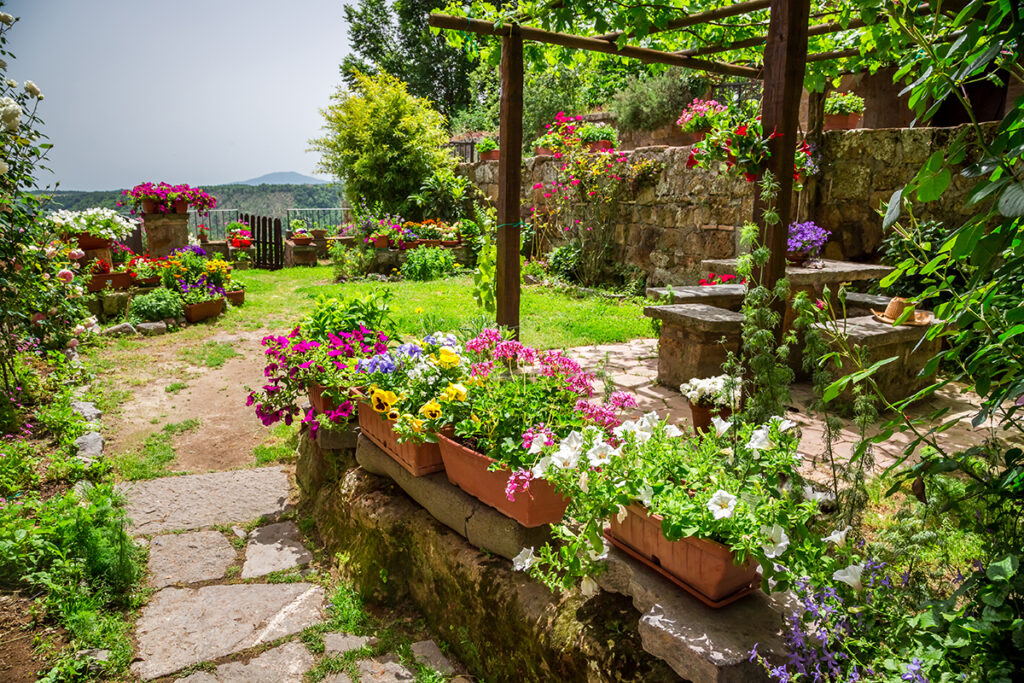
The Role of Water Features
Water features play a significant role in Mediterranean garden design due to their ability to create a relaxing atmosphere and add soothing sounds. Fountains, ponds, and urns are popular options for adding a touch of water to your garden.
Position your water features near your seating areas, or use a large urn as a focal point in your landscaping design. Be sure to select water features made from natural materials like stone or terracotta to maintain an authentic Mediterranean style.
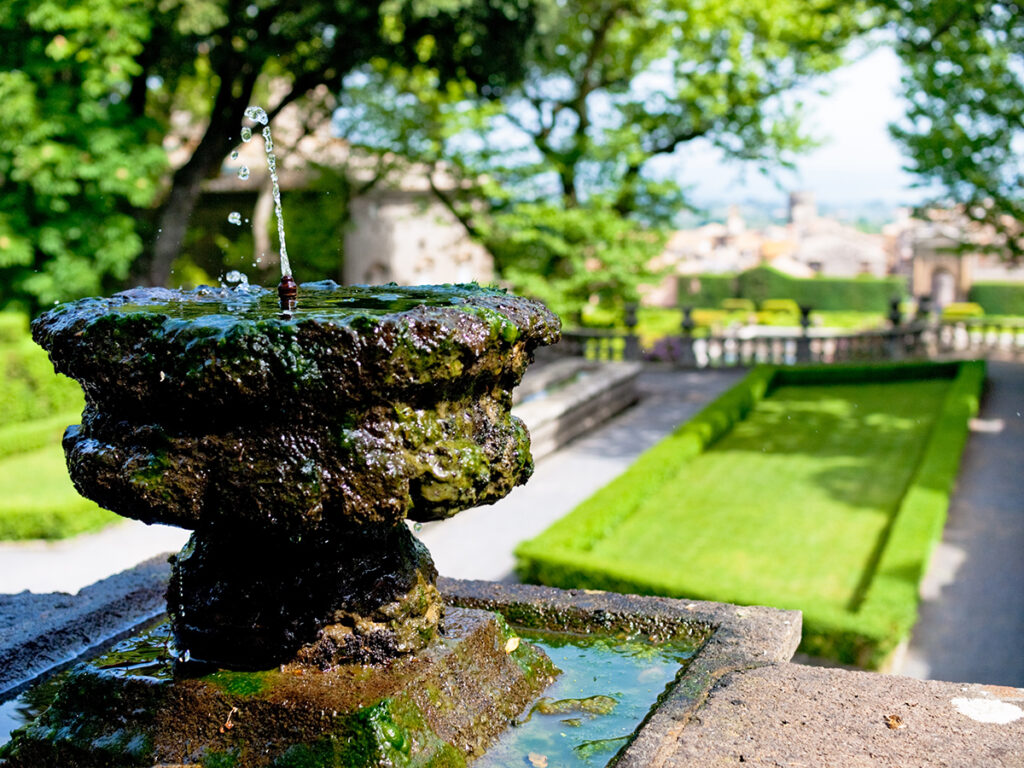
The Art of Container Gardening
In your Mediterranean garden, consider incorporating container gardening to showcase stunning, low-maintenance plants such as pelargoniums, salvia, and silver foliage plants. Opt for terracotta or clay pots, which help keep the soil cool through evaporation.
Place your containers in raised beds, along gravel pathways, or around focal points like boulders. Don’t forget to use saucers under your pots to hold water for your plants.
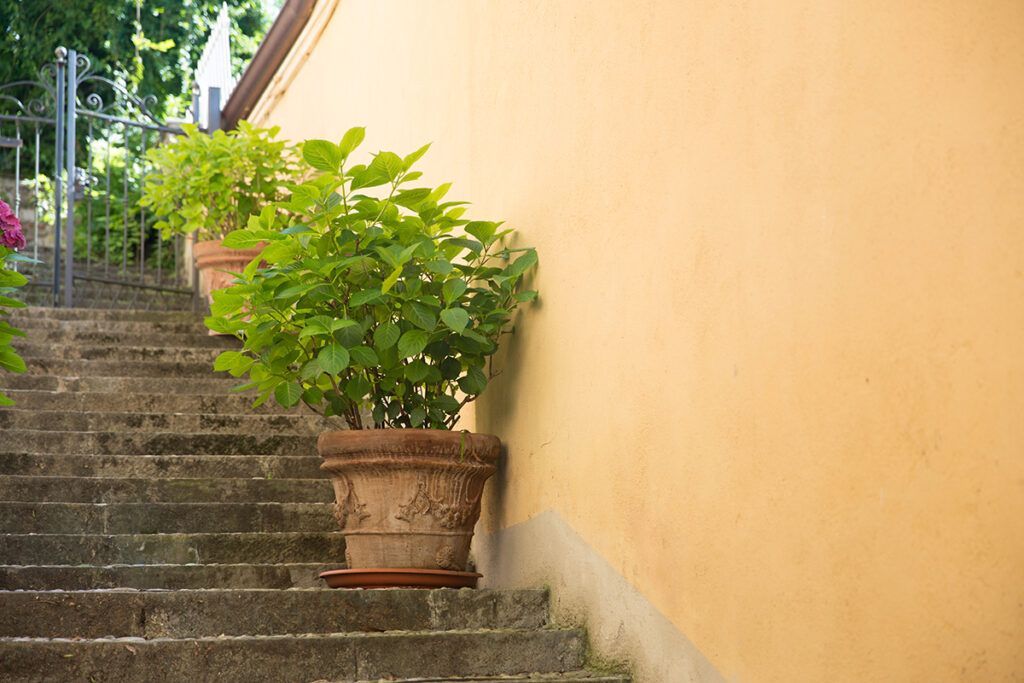
Frequently Asked Questions
What are the key elements of a Mediterranean garden design?
A Mediterranean garden design typically features a few key elements. First, you’ll want a focal point such as an olive tree or a hardy palm. Next, incorporate shrubs and perennials like Portuguese laurel, euphorbias, and genista.
Cypress trees are another iconic option that can punctuate borders or stand as imposing guardians at gateways. Pots and containers also play a key role in Mediterranean gardens, either as focal points or for decorative purposes.
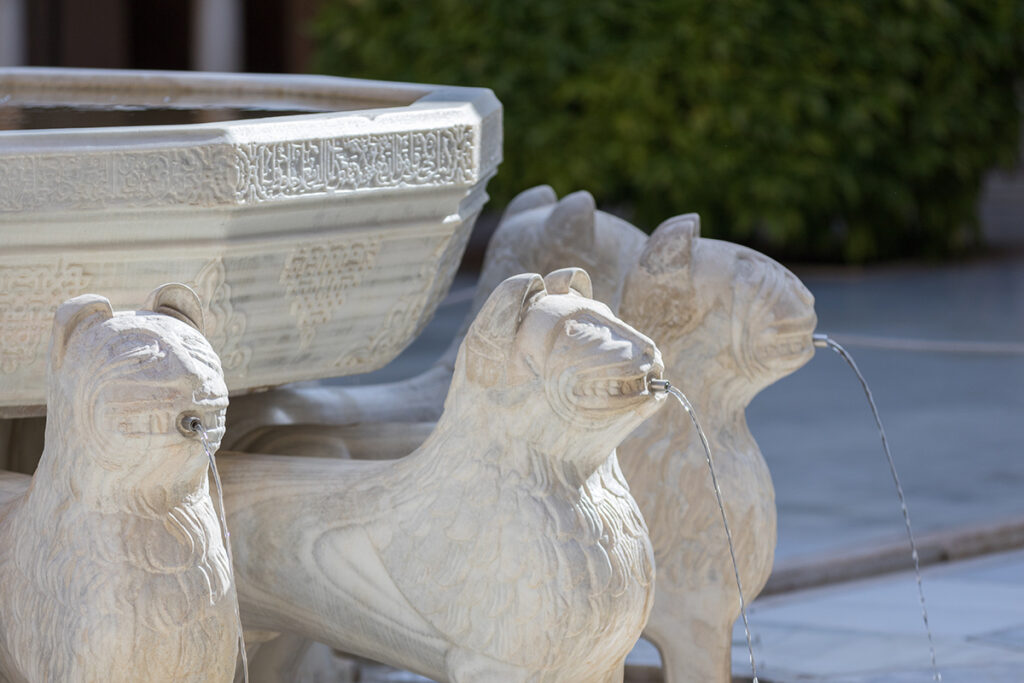
Which shrubs are suitable for a Mediterranean-style garden?
Shrubs that work well in a Mediterranean garden include drought-tolerant and sun-loving varieties. Some ideal options are Portuguese laurel, rosemary, lavender, and oleander. These shrubs not only add texture and visual interest, but many of them also offer delightful fragrances and vibrant colours.
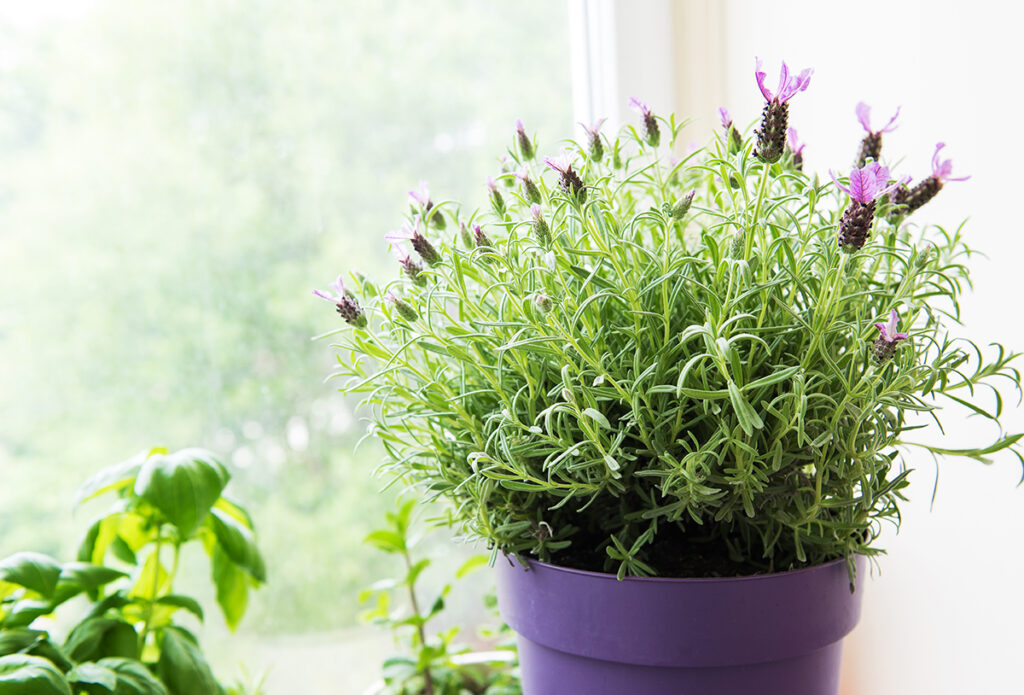
Can I create a Mediterranean courtyard garden in a colder climate?
Yes, you can create a Mediterranean courtyard garden in a colder climate by selecting hardier plants that can withstand lower temperatures. You’ll still want to choose plants with a Mediterranean appearance, such as silver foliage and vibrant blooms. Consider options like Russian sage, hardy geraniums, and some varieties of hebes.
Additionally, protect your plants from cold winds and frost by creating sheltered spots with walls, fences, or hedges. Make sure to select a sunny spot in your garden for this and you can help create a warmer microclimate.
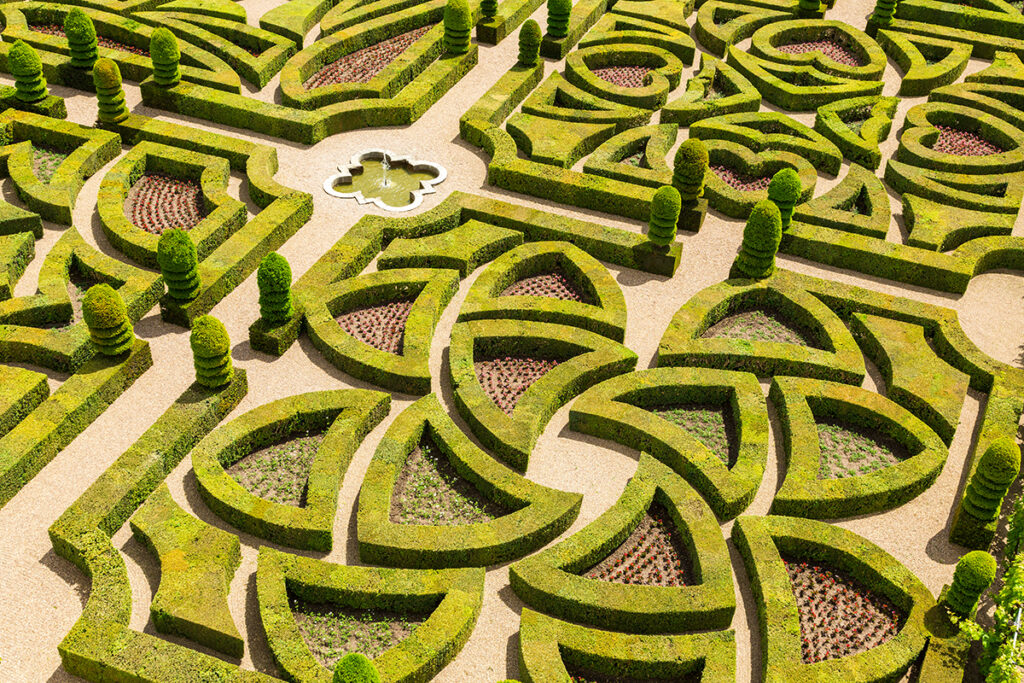
What are some Mediterranean garden design tips for small spaces?
For smaller spaces, try designing a Mediterranean courtyard garden, focusing on creating an intimate and inviting atmosphere. Implement pots and containers to make the most of your limited space, and consider using vertical elements like trellises or walls to grow climbing plants such as jasmine or bougainvillea.
Opt for a simple colour palette or a cohesive theme to maintain a sense of harmony in your garden, and consider incorporating seating or outdoor furniture to create a cosy oasis.
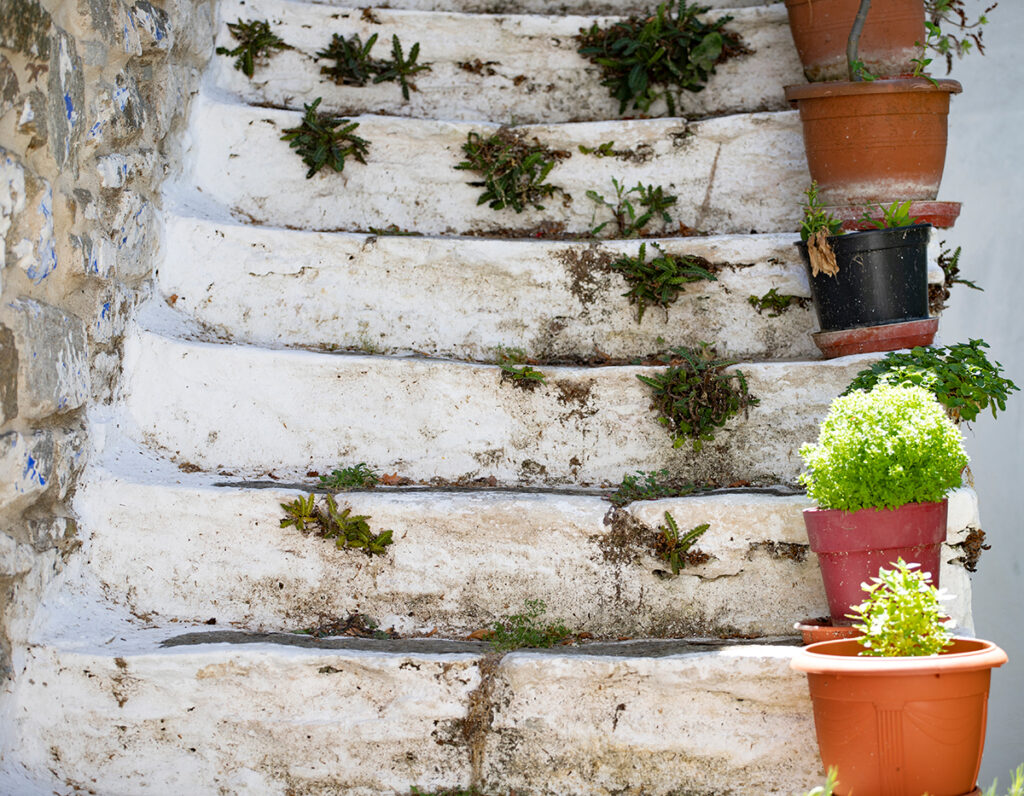
Which plants would work in a low-maintenance Mediterranean garden?
In a low-maintenance Mediterranean garden, you’ll want to focus on drought-tolerant plants that require minimal care. Consider choosing Mediterranean plants such as lavender, rosemary, and sage, which are not only fragrant and attractive, but also thrive with minimal water and care.
Succulents, like agave and sedum, are another excellent choice for a low-maintenance garden, as they require little attention and can withstand neglect. Groundcovers like creeping thyme can add visual interest while reducing the need for weeding and water.
What will you grow in your Mediterranean garden? Which sunny places have got you inspired? Let us know in the comments!
